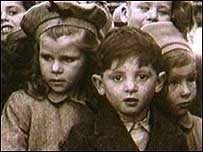 |
| Children of the United Kingdom's Children's Migrant Programme (Photo credit: Wikipedia) |
What is Adoption?
As mentioned, these latest developments concern the number of children that are in need of adoption. This means children that are in need of parents who will be required to assume full parental rights over them and to take this responsibility on as a lifetime commitment. A child who is adopted becomes a fully integrated and permanent member of that family and in the eyes of the law hold the same status, rights and protection as a child would by birth. Indeed, at the point a child is adopted, the birth/original parents relinquish their parental relationship and effectively cease to be the child’s parents in any legal context.
The concept of adoption is notably distinct from that of fostering where a foster parent cares for a child who is need of a secure home on a temporary basis. Although children may be in foster care for varying periods of time, the intention with fostering is always to return the child to their parent’s home as soon as possible, if possible. The birth/original parent remains the child’s legal parent and the foster parent becomes a temporary guardian.
Barriers to Adoption
The permanency of adoption introduces a number of factors which affect the ability to find suitable adoptive parents with which to place children. The fact that the prospective adopters must be willing themselves to make this lifetime commitment, and take on both the financial and emotional challenges that that brings, will limit the number of parents coming forward to adopt in the first place. Importantly, however, the stakes are also increased in regard to the welfare of the child, which is the ultimate concern with adoption. As a consequence there is a need for greater emphasis to be placed on making sure the parents and children are suitable matches and will subsequently be happy as a family. This is, of course, a concern in any scenario when placing a child with carers, but has even greater importance with adoption. It is the job of adoption agencies to ensure that the adoptive parents have come to terms with the commitment and that the child will be happy and secure with suitable parents for the rest of their lives.
With the higher stakes, there is a risk that the processes involved in qualifying for adoption and then placing individual children can be exhaustive and create too many administrative, practical and emotional obstacles; dissuading parents from entering the process, and preventing children from exiting care and finding settled families.
Upcoming Changes
As the government’s new map helps to demonstrate, there are currently more children waiting to be adopted than prospective adopters and so the challenge facing the government and agencies is to appeal to more parents/families to come forward, to enter the process, whilst ensuring that the necessary safeguards are in place to protect both the child and the adopters wellbeing.
To this end the government are looking towards a few initiatives to raise the profile of the adoption issues in the UK and make the process easier for parents to enter the pool of prospective adopters. The map is one stage in this. Parents can now see the scale of the shortfall in adoptive families in their local area by seeing the number of children who are eligible for adoption but still awaiting a suitable family. Hopefully, this may encourage those who may have been under an illusion that the chances of being successful in their applications was remote because of the competition they may have faced.
The map however is part of a wider initiative which also involves a new adoption hotline funded by the Department for Education but run by charities and staffed by people with first hand experience of the adoption process. The hotline aims to make it easier for prospective adoptive parents to access the information they need as well as to navigate their way through their applications. In addition, the government is planning to launch a new website, “Gateway for Adoption” later in the year which will aim to be just that and put parents into contact with the relevant agencies as they embark on their adoption journeys.
For those looking for legal advice in regard to the adoption process and other childcare related matters you can click here.

No comments:
Post a Comment